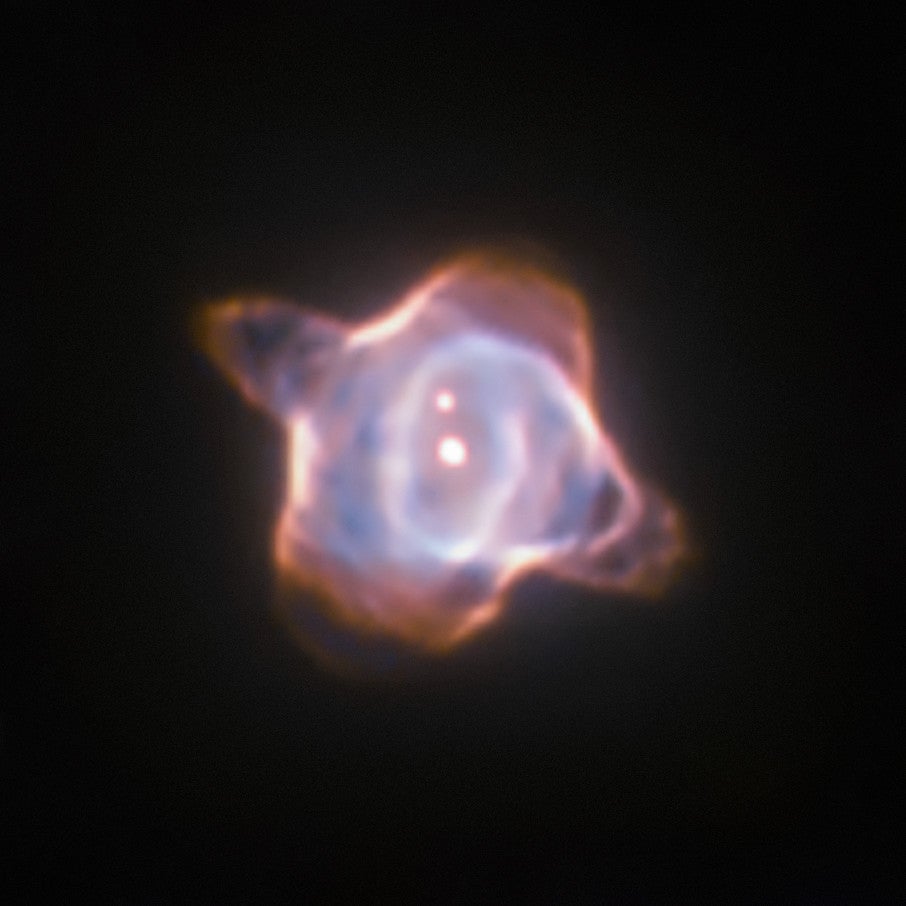
It’s hard to watch stars evolve. Take our Sun, for example; it’s been a big, hot orb for pretty much all of human history. Star SAO 244567 in the Stingray Nebula continues to prove that some old stars can quick face-lifts, and aren’t always the slow-aging stellar lobsters we assume they are. The behavior could come from a helium-shell flash, or a brief nuclear fusion explosion on the star’s surface, said lead author Nicole Reindl from the University of Leicester. This event, she said, could take the old star a step back in its evolution. SAO 244567 is the first such star astronomers have seen in both the heating up and cooling down phases, according to the press release from the European Space Agency.
Back in 1993, astronomers published their results detailing how the star had turned into a planetary nebula, meaning it was shooting shells of ionized gas outwards, after just 40 years of observation. Scientists pointed the Hubble Space Telescope at the star again, and noticed it heated 40,000 degrees celsius from 1971 to 2002. But now, SAO 244567 has started to cool down.









